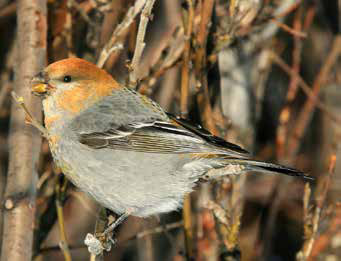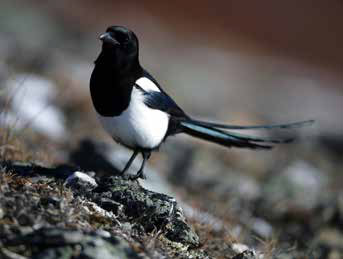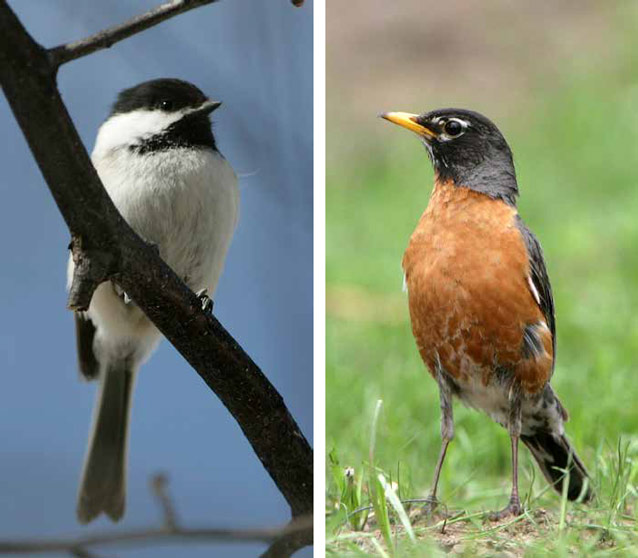
NPS Photo / Tim Rains
Interested in getting involved in bird-related projects and activities near you? There are some great opportunities out there to participate in annual events and long-term citizen science monitoring activities. Whether you are a skilled birder or just beginning, here are some great resources to get involved!
The Great Backyard Bird Count and FeederWatch
The Great Backyard Bird Count (GBBC), organized by the Cornell Lab of Ornithology and the Audubon Society, is a great way to bird from the comfort of home and contribute to a long-term data set. Held annually, the count helps form a snapshot of bird populations all across the globe. Participation is as easy as counting and identifying birds in your backyard for at least fifteen minutes on one or more days within the count dates. This study has helped scientists identify the distribution of snowy owl (Bubo scandiaca) populations during the 2015 polar vortex and various other population dynamics using crowdsourcing techniques. The next GBBC will take place from February 12 to 15, 2016. For more information and to register, visit gbbc.birdcount.org.
For those interested in recording and submitting species lists and numbers of the birds they see at their feeders throughout the winter (November to early April), check out Project FeederWatch. Data gathered through Project FeederWatch provides information on the long-term trends in abundance and distribution of birds throughout North America. Participants are asked to identify, count, and record the bird species they see at their feeder during a two-day window that the participant chooses. Participants can choose multiple two-day schedules in which to record their observations throughout the winter.
International Migratory Bird Day
Celebrate bird migration each spring during International Migratory Bird Day (IMBD), a project of Environment for the Americas. Although officially recognized as the second Saturday in May in the United States and Canada, Migratory Bird Day activities happen at different times throughout the spring.

NPS Photo / Tim Rains
Activities are sponsored by a variety of agencies and organizations, including bird walks, festivals and other special IMBD programs and events. The goal of IMBD events is to give the public opportunities to learn about b irds and bird conservation. In Alaska, 2015 activities and events included the Kachemak Bay Shorebird Festival in Homer, bird walks in Anchorage, a migratory bird count in King Salmon, bird banding demonstrations in Juneau, and an IMBD roundtable in Glacier Bay National Park.
If you find yourself soaking up the sun south of the US border in the fall, you might be able to take part in other IMBD activities and events celebrated in Latin America and the Caribbean in October. To learn more about IMBD and to find events near you, visit www.migratorybirdday.org. Anyone can take part in these activities and all skill levels are welcome.

Steve Thomas
Christmas Bird Count
Every year since 1900 (the same year the last wild passenger pigeon {Ectopistes migratorius} was sighted) citizen scientists spend a day out birding in what is known as the Christmas Bird Count. What started as an annual hunting tradition to see who could collect the most, largest, and greatest variety of species was changed to an annual Christmas bird census; the longest running citizen science project to date. With such a long detailed history of sighting and population data, the Christmas Bird Count is a tool used by scientists to identify trends in bird populations and forecast future change. It has also been instrumental in the development of conservation strategies and initiatives. The 2013 Christmas Bird Count included 2408 count areas from the Arctic to the Andes. Over 66 million birds were tallied; 2,403 species in total! Thirty-seven counts were compiled in Alaska.
To learn more about the great annual event, visit the Audubon website. Registration opens in November for the impending Christmas Bird Count.

Steve Thomas
Coastal Observation and Seabird Survey Team
If you live near the coast, love to walk on the beach, and want to contribute to a long-term monitoring effort, COASST is for you! The Coastal Observation and Seabird Survey Team (COASST) collects baseline data on seabird mortality through a dedicated group of volunteer citizen scientists committed to monthly data collection. Participants walk their designated beach each month to look for dead birds. When encountered, the birds are identified by species, marked, photographed, and then left in place. Each month, the beach is re-surveyed by the dedicated team; new birds are marked and re-found birds are recorded. All in all, this effort provides information on trends in seabird mortality and carcass persistence on beaches, and helps scientists identify natural and human-caused mortality events.
COASST was founded by Dr. Julia Parrish in 1998, and is based out of the University of Washington. To participate, COASSTers take part in a six-hour training session and sign a contract to walk the same designated beach each month. A small deposit fee is used to provide the training and field materials.

Steve Thomas
Whether you are interested in participating in annual bird-related activities or festivals, contributing to science by recording bird sightings from your living room, or participating in monthly beach walks to document seabird mortality, there are plenty of ways to get out and bird!
Part of a series of articles titled Alaska Park Science - Volume 14 Issue 2: Birds of Alaska's National Parks.
Last updated: May 5, 2016
